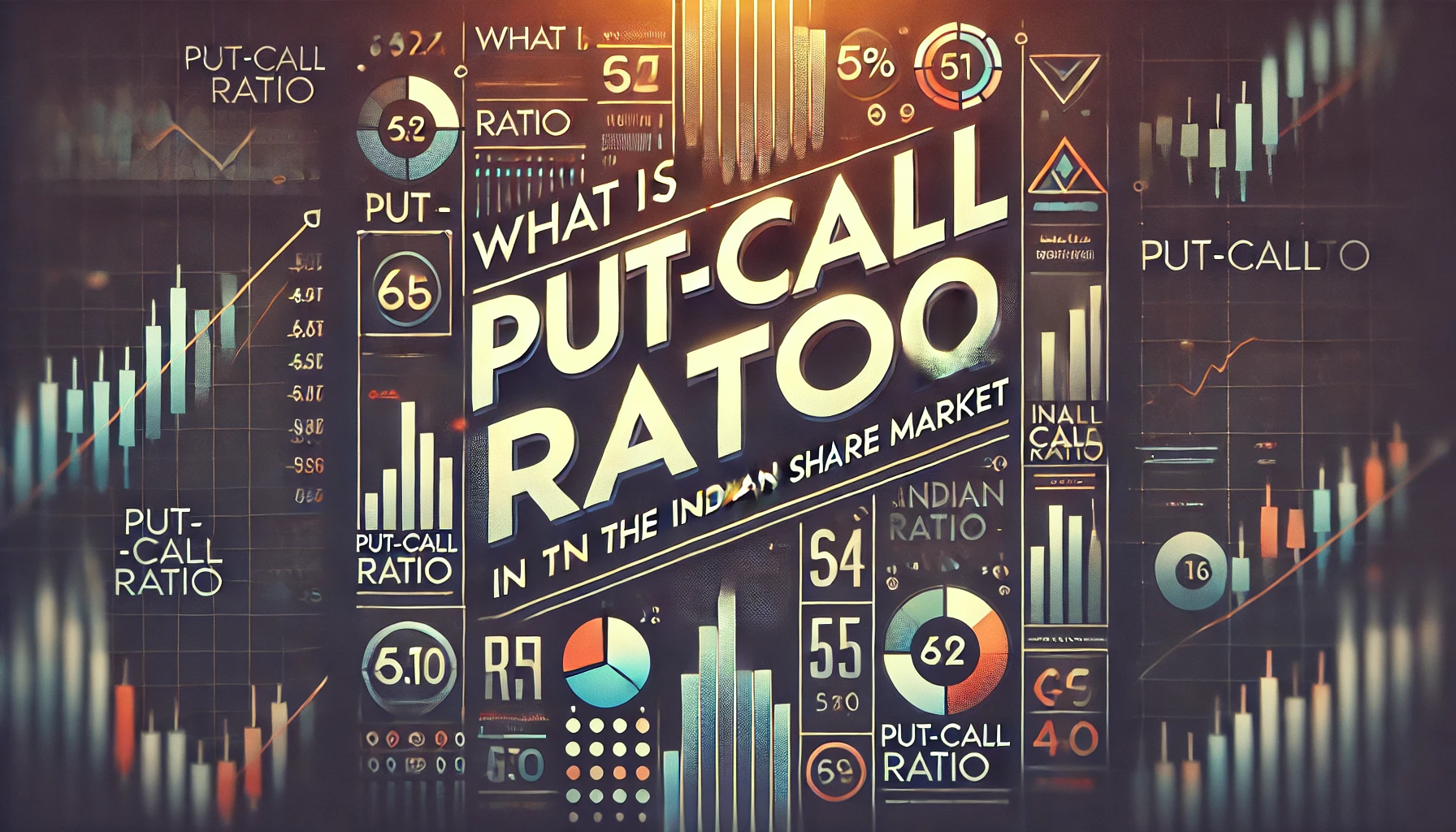In the Indian share market, advanced trading strategies such as the Call Ratio Back Spread offer traders a way to manage risk while taking advantage of market volatility. This strategy is popular among experienced options traders looking for a potential profit during both sharp upward and downward price movements.
In this detailed guide, we will explore the Call Ratio Back Spread, including how it works, when to use it, and what its advantages and disadvantages are. Historical data and real-world examples will also be provided to give you a better understanding of this complex strategy.
What is a Call Ratio Back Spread?
The Call Ratio Back Spread is an options trading strategy that involves buying more call options than selling. It is designed to benefit from significant price movements in either direction, though it is primarily a bullish strategy. Unlike simpler options strategies, the Call Ratio Back Spread offers a limited loss potential and unlimited profit potential if the underlying stock price rises significantly.
Components of a Call Ratio Back Spread:
- Selling Call Options: The trader sells a smaller number of call options at a lower strike price.
- Buying Call Options: The trader buys a larger number of call options at a higher strike price.
This strategy is typically set up in a 1:2 or 1:3 ratio, meaning that for every call option sold, two or three are bought. The idea behind the strategy is to cover the cost of the purchased options using the premium earned from selling the options.
How Does the Call Ratio Back Spread Work?
The Call Ratio Back Spread relies on the volatility of the market. If the price of the underlying stock increases significantly, the trader can profit from the extra call options purchased. If the stock price stays relatively stable or decreases slightly, the losses are limited to the net premium paid for the strategy.
Example Setup: Assume that a stock is trading at ₹500, and a trader expects significant volatility. They execute a Call Ratio Back Spread by:
- Selling 1 call option with a strike price of ₹520.
- Buying 2 call options with a strike price of ₹540.
The premium collected from selling the ₹520 call helps offset the cost of buying the ₹540 calls. If the stock price rises sharply above ₹540, the trader stands to make a significant profit. However, if the stock remains between ₹520 and ₹540, the trader incurs a loss limited to the net premium.
Break-Even Points: There are typically two break-even points in this strategy:
- Lower Break-Even: Calculated based on the net premium received or paid.
- Upper Break-Even: Calculated using the formula: UpperBreak−Even=StrikePriceofLongCall+(PremiumPaid/NumberofCallsBought−1)Upper Break-Even = Strike Price of Long Call + (Premium Paid/Number of Calls Bought – 1)UpperBreak−Even=StrikePriceofLongCall+(PremiumPaid/NumberofCallsBought−1)
Payoff Structure: The payoff of a Call Ratio Back Spread can be visualized as follows:
| Stock Price at Expiration (₹) | Net Premium (₹) | Profit/Loss (₹) |
|---|---|---|
| < 520 | Premium Earned | Loss Limited |
| Between 520 and 540 | Net Premium Paid | Small Loss |
| > 540 | Significant Profit | Unlimited Profit |
When to Use a Call Ratio Back Spread?
A Call Ratio Back Spread is best used in the following scenarios:
- Expecting High Volatility: The strategy thrives when traders expect significant movement in the stock price but are uncertain about the direction.
- Bullish Sentiment: Though the strategy can profit from downward movements, it is generally more effective in bullish markets where large upward price movements are anticipated.
- Hedging Strategies: Traders use this strategy as a hedge against existing short positions.
Historical Performance of Call Ratio Back Spread
Let’s look at a historical example of how the Call Ratio Back Spread has performed in the Indian share market during periods of high volatility.
| Year | Stock | Strategy Outcome | Comments |
|---|---|---|---|
| 2017 | Reliance Industries | Profit (Stock price rose significantly) | Significant movement due to the launch of Jio, benefiting the strategy. |
| 2020 | Tata Motors | Loss (Moderate price movement) | Stock remained within the break-even range, resulting in a small loss. |
| 2021 | Infosys | Profit (Sharp rise during market recovery) | Market recovery post-pandemic led to high returns for Call Ratio Back Spread. |
Advantages of the Call Ratio Back Spread
- Limited Losses: The strategy limits potential losses to the net premium paid, making it a relatively safe bet for traders who expect volatility but want to manage their risk.
- Unlimited Profit Potential: If the stock price rises sharply, the potential gains are unlimited due to the larger number of long call options.
- Benefit from Volatility: The strategy can take advantage of large price swings, even if the trader is uncertain about the direction of the movement.
Disadvantages of the Call Ratio Back Spread
- Complexity: The Call Ratio Back Spread is a complex strategy and is typically used by experienced traders. It requires a solid understanding of options and their pricing.
- Limited Profit in Moderate Movements: If the stock price remains within a narrow range, the strategy will result in a loss, as the cost of the purchased calls outweighs the premium from the sold calls.
- Margin Requirements: Since the strategy involves selling options, there are margin requirements that traders need to meet, which can make it capital-intensive.
Call Ratio Back Spread vs Other Strategies
| Strategy | Profit Potential | Loss Potential | Complexity |
|---|---|---|---|
| Call Ratio Back Spread | Unlimited (upward movement) | Limited (net premium paid) | High |
| Bull Call Spread | Limited | Limited (net premium paid) | Moderate |
| Long Call | Unlimited | Limited (premium paid) | Low |
Real-World Application: Call Ratio Back Spread in Nifty 50
To understand the real-world application, let’s look at an example involving the Nifty 50 index in India.
Scenario: A trader expects volatility in the Nifty 50 and sets up a Call Ratio Back Spread:
- Sell 1 call at a strike price of ₹17,000.
- Buy 2 calls at a strike price of ₹17,200.
| Date | Nifty 50 Price (₹) | Net Premium (₹) | Profit/Loss (₹) |
|---|---|---|---|
| May 1, 2023 | 16,800 | Premium Earned | Small Loss |
| May 15, 2023 | 17,500 | Net Premium Paid | Significant Profit |
Managing Risk in Call Ratio Back Spread
While the Call Ratio Back Spread limits losses, traders should still implement risk management strategies:
- Monitor Volatility: Keep track of volatility indexes like the India VIX to gauge market sentiment.
- Use Stop-Loss Orders: Setting stop-loss orders can help mitigate potential losses if the market moves in an unexpected direction.
- Regular Adjustments: As the market changes, adjustments to the strategy may be necessary, such as adding more options or closing positions early.
Conclusion
The Call Ratio Back Spread is a powerful options trading strategy for experienced traders in the Indian share market. By using this strategy, traders can limit their losses while positioning themselves to take advantage of significant upward price movements. Though complex, it is an effective tool for those looking to capitalize on market volatility.
With proper knowledge, historical data analysis, and risk management, traders can successfully implement the Call Ratio Back Spread in their trading portfolio.

What Is Implied Volatility?
In the realm of Indian share market derivatives, implied volatility (IV) plays a crucial role …

What is Margin Funding?
Margin funding is a powerful tool in the Indian share market that allows traders to …

Forward vs Future contract
In the Indian share market, derivatives such as forward and future contracts play a pivotal …

What is Margin Money?
Margin money is a crucial aspect of trading in the Indian share market, especially in …

What is Put-Call Ratio?
The Put-Call Ratio (PCR) is one of the most widely used indicators in options trading …

What is Derivatives?
Derivatives are financial instruments whose value is derived from an underlying asset or benchmark. In …

What is Cost of Carry?
The cost of carry is an essential concept in futures trading that reflects the cost …

What is futures
Futures are a fundamental part of derivatives trading in the Indian stock market. They allow …

Bullish Option Strategies
In the ever-evolving world of derivatives trading, options have become a powerful tool for investors …

Understanding Physical Settlement in Futures & Options Contracts: A Comprehensive Guide
In the world of derivatives trading, the concept of physical settlement has gained prominence, particularly …

what are call options
The Indian share market has expanded significantly over the years, attracting a growing number of …

What Is Credit Spread Strategy
In the world of options trading, the credit spread strategy is one of the most …

What Is a Forward Contract
A forward contract is a customized financial agreement between two parties to buy or sell …

Types of Derivatives in India
The Indian derivatives market has grown exponentially, becoming a vital tool for investors and traders …

What is Swaps Derivatives
In the world of derivatives, swaps are a special class of contracts that allow two …

Intrinsic Value and Time Value of Options
Options trading is one of the most widely used financial instruments in the Indian share …

What is Open Interest?
In the world of derivatives, the concept of “Open Interest” plays a crucial role in …

Types of underlying assets in derivatives
The Indian derivatives market has grown exponentially over the last few decades, thanks to its …

derivatives on Option Volatility & Pricing Strategies
The Indian share market derivatives segment is a dynamic environment where advanced traders rely heavily …

What is Futures Contract
The Indian share market offers various financial instruments that provide opportunities for investors and traders. …

What is implied volatility in options?
In the world of options trading, one of the most crucial elements to understand is …

Futures Pricing Formula
The Indian share market is known for its dynamic nature and offers various opportunities for …

What is an ITM Call Option?
The world of options trading is filled with technical terms that are crucial for investors …

What is Max Pain Theory?
The Indian share market is full of strategies and theories that traders use to predict …

What is OTM Call Options
In options trading, terms like “in the money” (ITM), “at the money” (ATM), and “out …

What Is Rollover
Rollover is a common term in the world of futures and derivatives trading, especially in …

Futures Prices Converge Upon Spot Prices
In the world of financial markets, futures contracts play a significant role. One of the …

Call Ratio Back Spread
In the Indian share market, advanced trading strategies such as the Call Ratio Back Spread …

Margin Call Meaning
A margin call is one of the most critical warnings in trading, often marking a …

What is Bermuda Option?
The financial markets are full of complex instruments, and one such tool is the Bermuda …


















